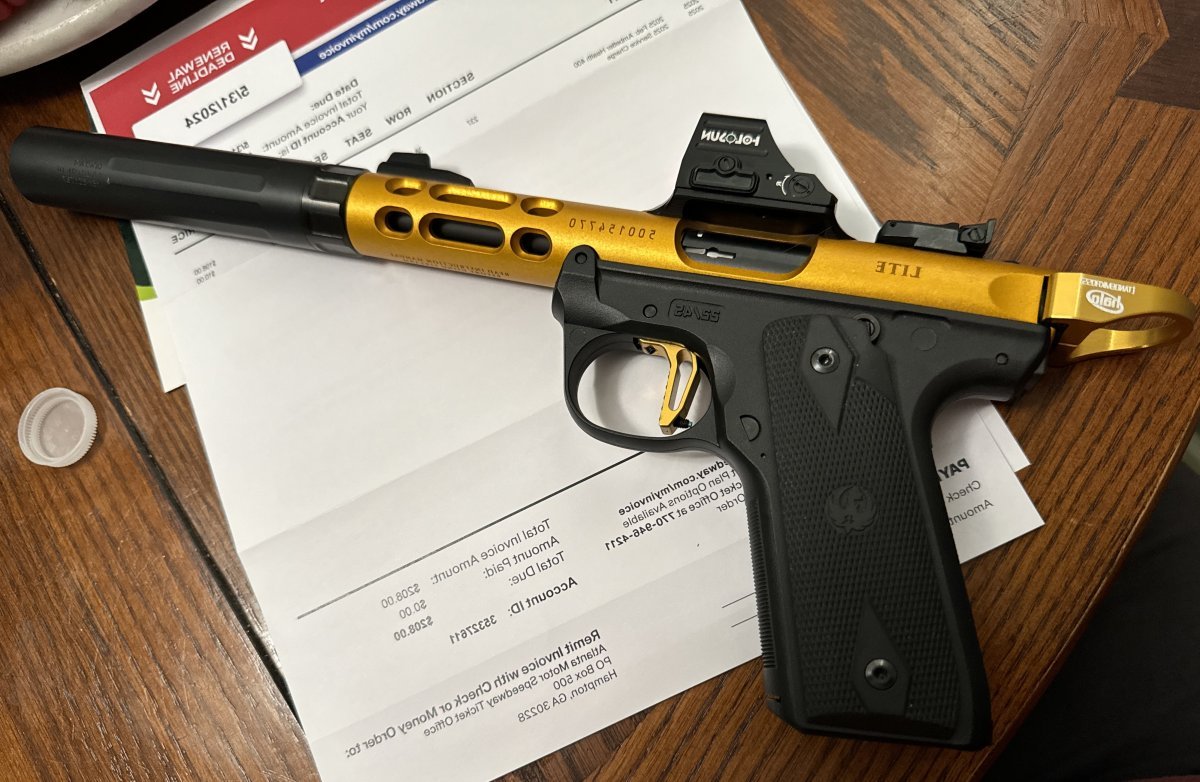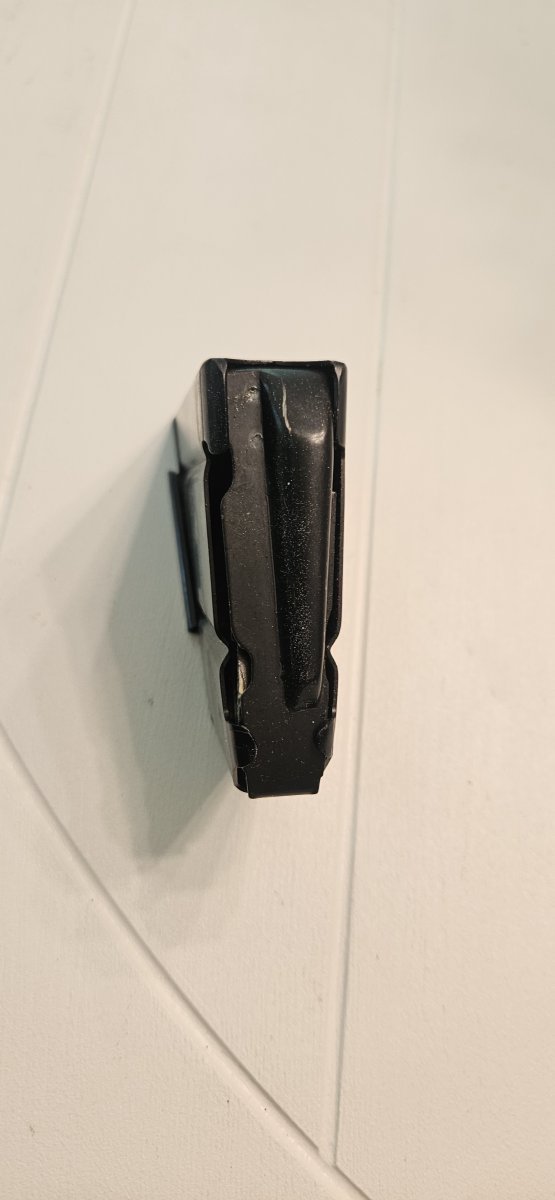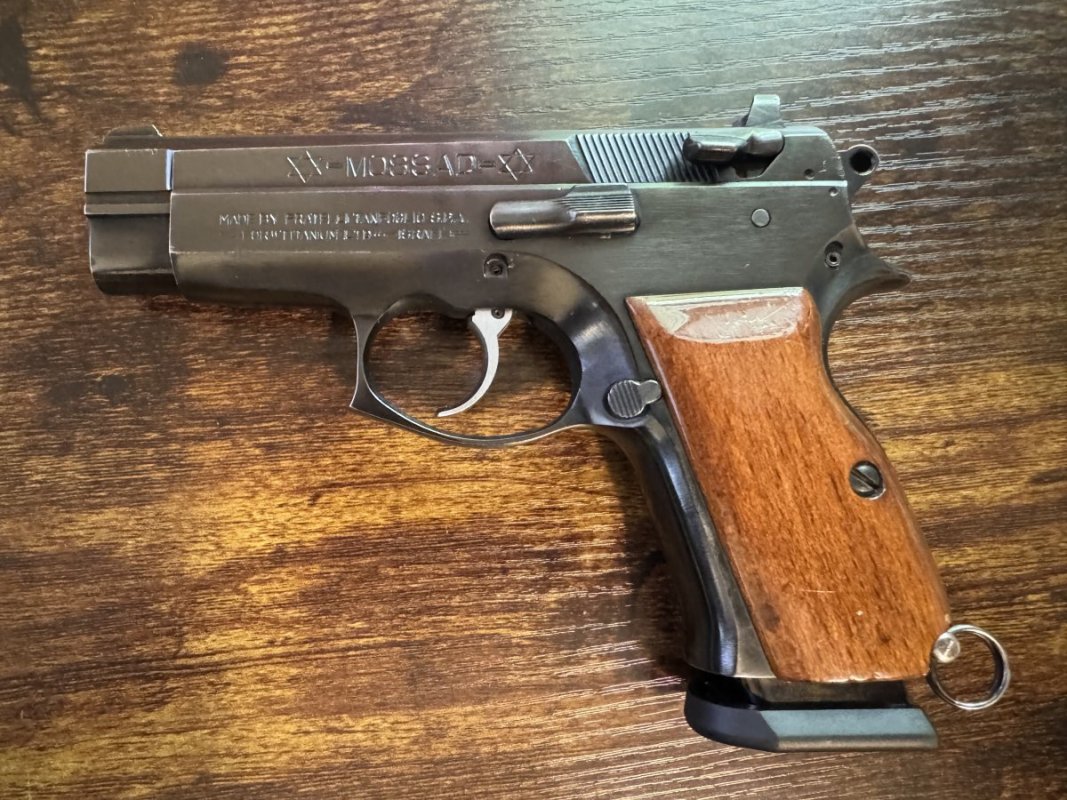Did the post WWII P38's come with two magazines and holster like the war era p38's did? I read that they would all have matching serial numbers. So if you have the whole set the value is greatly increased.
Navigation
Install the app
How to install the app on iOS
Follow along with the video below to see how to install our site as a web app on your home screen.
Note: This feature may not be available in some browsers.
More options
-
ODT Gun Show & Swap Meet - May 4, 2024! - Click here for info
You are using an out of date browser. It may not display this or other websites correctly.
You should upgrade or use an alternative browser.
You should upgrade or use an alternative browser.
Help with this older Walther P38 9mm.
- Thread starter GeorgiaHunter
- Start date
it's probably late 50s-early 60s. This was made before they changed the name to the p1 in 1963 to make it the official german sidearm again
directly after ww2 the french made p38s using some new manufacture parts but mostly parts leftover from the war (so it might have a steel frame) until walther rebuilt their manufacturing plant and started producing p1/p38 with aluminum frame to save money(the aluminum is not the high grade stuff we have today so stick with 115 grain non +p ammo)
in ww2 they used code to state the manufacturer so that the allies couldn't find the production centers a easily
I paid $350 for a post war 70s p1, they don't have the collectors value of the ww2 variation
Hey what year did you pay $350 for your pistol? I'm still trying to get an accurate value on this pistol. If it is one of the '57-'63 production run is it worth much more than the later production runs?
Who says only use 115 gr. bullets in it? Where's the citation to some authority on that?
That doesn't make sense to me. The 124 grain bullets, loaded to standard pressures, (Not +P or +P+) should be fine.
My dad was a WWII veteran, and he picked up a captured P38 right after the war, while serving with the then-occupying Allied troops in Germany. All the Americans knew not to use black-bullet submachine gun ammo in these pistols, or any Luger either. But nobody ever said not to shoot 124 grain bullets in them.
I find it hard to believe that even aluminum alloy framed postwar commercial P38s would be so poorly designed that they cannot handle standard, common, ordinary bullet weights like 124 gr. for the 9 x 19 mm round.
That doesn't make sense to me. The 124 grain bullets, loaded to standard pressures, (Not +P or +P+) should be fine.
My dad was a WWII veteran, and he picked up a captured P38 right after the war, while serving with the then-occupying Allied troops in Germany. All the Americans knew not to use black-bullet submachine gun ammo in these pistols, or any Luger either. But nobody ever said not to shoot 124 grain bullets in them.
I find it hard to believe that even aluminum alloy framed postwar commercial P38s would be so poorly designed that they cannot handle standard, common, ordinary bullet weights like 124 gr. for the 9 x 19 mm round.
this is a well designed pistol which still has it's flaws that walther addressed later, the openings image showed a aluminum framed post war p38 with no hex bolt added and a thinner slide so the 115 gr 9mm recommendation was made
with the older steel framed p38s they could handle the 124 gr military ammo over time without breaking, the aluminum wasn't as strong so the steel. the feed ramp was designed with fmj in mind but i use shorter, smaller flat tipped 115 gr critical defense with my p1 as it works in even a db9
i bought mine this year but as to value i don't know, the ww2 ones are valued more highly for their original steel framed design and their use during the war
walther had to add a hex bolt into the aluminum frame later as the barrel movement would crack the frame over time, and made the slide thicker. the p38 was designed for steel frames so the aluminum frame was a compromise for cost and weight reasons

Only 115gr tho, never any others? Does it need to be only be fmj, never jhp?
Sent from my SM-G900P using Tapatalk
with the older steel framed p38s they could handle the 124 gr military ammo over time without breaking, the aluminum wasn't as strong so the steel. the feed ramp was designed with fmj in mind but i use shorter, smaller flat tipped 115 gr critical defense with my p1 as it works in even a db9
Hey what year did you pay $350 for your pistol? I'm still trying to get an accurate value on this pistol. If it is one of the '57-'63 production run is it worth much more than the later production runs?
i bought mine this year but as to value i don't know, the ww2 ones are valued more highly for their original steel framed design and their use during the war
Who says only use 115 gr. bullets in it? Where's the citation to some authority on that?
That doesn't make sense to me. The 124 grain bullets, loaded to standard pressures, (Not +P or +P+) should be fine.
My dad was a WWII veteran, and he picked up a captured P38 right after the war, while serving with the then-occupying Allied troops in Germany. All the Americans knew not to use black-bullet submachine gun ammo in these pistols, or any Luger either. But nobody ever said not to shoot 124 grain bullets in them.
I find it hard to believe that even aluminum alloy framed postwar commercial P38s would be so poorly designed that they cannot handle standard, common, ordinary bullet weights like 124 gr. for the 9 x 19 mm round.
walther had to add a hex bolt into the aluminum frame later as the barrel movement would crack the frame over time, and made the slide thicker. the p38 was designed for steel frames so the aluminum frame was a compromise for cost and weight reasons

Hey what year did you pay $350 for your pistol? I'm still trying to get an accurate value on this pistol. If it is one of the '57-'63 production run is it worth much more than the later production runs?
just adding another point of reference for you. I paid $375 a year ago for a 1960 P38 (P1) in excellent condition. I would say 350-400 was market for it. Now my Mauser 1944 P38 is probably $1000+
Thanks for the explanation.this is a well designed pistol which still has it's flaws that walther addressed later, the openings image showed a aluminum framed post war p38 with no hex bolt added and a thinner slide so the 115 gr 9mm recommendation was made
with the older steel framed p38s they could handle the 124 gr military ammo over time without breaking, the aluminum wasn't as strong so the steel. the feed ramp was designed with fmj in mind but i use shorter, smaller flat tipped 115 gr critical defense with my p1 as it works in even a db9
i bought mine this year but as to value i don't know, the ww2 ones are valued more highly for their original steel framed design and their use during the war
walther had to add a hex bolt into the aluminum frame later as the barrel movement would crack the frame over time, and made the slide thicker. the p38 was designed for steel frames so the aluminum frame was a compromise for cost and weight reasons

Sent from my SM-G900P using Tapatalk






